Summary
Before volcanoes erupt, there is already rumbling underground. Recognising characteristic features in this “sound” is an important step on the way to predicting potential eruptions and providing early warning. Research led by Zahra Zali, Mostafa Mousavi, Mathias Ohrnberger, Eva Eibl, and Fabrice Cotton from the German Research Centre for Geosciences (GFZ), the Stanford University and the University of Potsdam analysed the seismic signals before and during the Geldingadalir eruption on the Icelandic Reykjanes peninsula in 2021. It was the first in a series of – so far – five volcanic events there, most recently in December 2023 and January 2024 near Grindavík. The researchers used machine learning and music processing methods for their analyses and developed them further. Thus, they were able to identify various previously hidden signatures in the “sound of the volcano” that were characteristic of the various eruption phases. In particular, they detected a tremor sequence three days before the eruption, which could indicate imminent eruptive activity. A subtle episodic tremor later on could herald the transition from continuous lava flow to lava fountains. The study has been published in the journal Nature Communications Earth and Environment.
Background: Seismic signals as indicators of volcanic eruptions
In view of the destructive potential of volcanic eruptions, predicting the timing, strength and course of eruptions is a central goal of volcanological research. This is made more difficult by the variety and complexity of the phenomena that occur before and during the eruption, for example when rocks break or magma rises. Seismic signals are an important source of data for the evaluation of underground processes, both during the eruption and for research into eruption precursors. For example, seismic swarms, recurring earthquakes and volcanic tremors are recorded. The latter are continuous seismic signals that often accompany eruptions. They are regarded as potential geophysical markers for predicting eruptions, but are not always easy to distinguish from other superimposed signals.
New approaches to analysing the seismic data from the Geldingadalir 2021 eruption
A new approach to accurately decompose and analyse seismic data related to volcanic eruptions has now been demonstrated by Zahra Zali, currently a post-doc scientist in GFZ Section 4.2 “Geomechanics and Scientific Drilling”, and Fabrice Cotton, Head of GFZ Section 2.6 “Earthquake Hazards and Dynamic Risks” and Professor at University Potsdam, together with their colleagues Mathias Ohrnberger, scientist, and Eva Eibl, Junior-Professor, both at University Potsdam, and Mostafa Mousavi from Stanford University, USA. They have further developed special machine learning (ML) methods, so-called “Deep Embedded Clustering” (DEC), and musical signal processing. These developments were inspired and initiated by the work of Frank Scherbaum, who created a new field of research at the interface of musicology and seismology as Professor at the University of Potsdam about ten years ago.
The research team used these techniques to analyse seismic data recorded before and during the eruption at Geldingadalir, Iceland, which began on 19 March 2021. The data originates from a measuring station 5.5 kilometres south-east of the eruption site. The investigations were also part of Zahra Zali's PhD work, which she successfully completed in September 2023 as part of the DFG graduate school “NatRiskChange” at the GFZ and the University of Potsdam
Special methods of machine learning and musical signal processing
“Using the method of deep embedded clustering, we were able to cluster signals of similar structure in our seismic data and thus recognise previously hidden patterns. We are using a so-called “unsupervised” machine learning approach here. The advantage over other ML methods is that it can be applied to unlabeled data and delivers results independently, without specifications and quickly – almost in real time,” explains Zahra Zali.
In order to verify these initial results and extract both volcanic tremor and transient signals, i.e. sudden earthquakes, from the data, the researchers used a method that Zahra Zali had further developed for analysing seismic signals as part of her doctoral thesis: “I was inspired by the idea of harmonic-percussive separation (HPS) in musical signal processing. Because the problem is similar with these acoustic waves: in order to identify different instruments in a piece of music, different types of sounds have to be separated from each other, for example the harmonic sounds of melodious violins from the percussive sounds of a drum,” explains Zali.
Key findings on the Geldingadalir eruption 2021: Identification of two potential warning signals
Volcanic activity on Iceland's Reykjanes Peninsula began after a 781-year period of dormancy. The first eruption was preceded by a series of seismic swarms and intrusion events, i.e. the intrusion of magma into rock. It started with a remarkable week-long earthquake swarm in December 2019, and just over a year later, on 24 February 2021, a magnitude 5.7 earthquake marked the beginning of the last seismic sequence before the Geldingadalir 2021 eruption. Three weeks later, the magma reached the surface, and on 19 March 2021, a fissure opened near Fagradalsfjall and the eruption began. It was initially characterised by a continuous magma outflow, which became stronger from 27 April and then changed to a phase of lava fountains on 2 May, which ended on 13 June.
With their new approaches, the researchers were able to trace the various phases of the eruption in detail and precisely date their transitions. In particular, the researchers identified two subtle signals that could be important for the early warning and forecasting of volcanic eruptions and activities:
Firstly, they found a tremor sequence that started as early as three days before the eruption and persisted during it. It had not been described in previous scientific analyses of the event. “Our observation of the volcanic tremor from 16 March, three days before the eruption, could indicate that magma had reached the near-surface crust. This is because such pre-eruptive tremors are mainly due to magma movements and their interactions with gas and neighbouring rock,” explains Zali.
Secondly, they identified a subtle episodic tremor in the transition from flowing lava to the beginning of lava fountains. This could be related to an increase in the outflow rate shortly beforehand.
The clustering of the data and its interpretation
In the seismic data, the researchers were able to identify four main clusters, i.e. signals of roughly four types (EQ, CT1, ET, CT2), each corresponding to the main phases of volcanic activity (see Figure 4):
The earthquake cluster EQ (Earthquake) marks the intense seismic activity before the eruption. It begins on 12 March and ends before the start of the eruption on 19 March. However, isolated earthquake signals can still be identified up to 14 June.
Cluster CT1 (Continuous Tremors) begins three days before the eruption and ends on 27 April. It represents continuous tremors due to processes that are active during the continuous lava outflow.
From 27 April to 13 June, a cluster of episodic tremors ET is identified, which are associated with – episodic – lava fountains. The fountains do not occur until 2 May. However, the eruption style had already changed to an increased outflow rate after 27 April. Geochemical analyses indicate that the lava melts, which previously originated from the Earth's uppermost mantle, are now coming from greater depths. On closer analysis, the episodic tremors were once again divided into four different phases and precisely dated (see Figure 4).
Cluster CT2 (Continuous Tremors 2) from 13 to 24 June mainly contains continuous tremors.
Resume
“Our method offers a fast and reproducible approach to automatically decipher the temporal evolution of a volcanic system: Based on raw seismic signals, we can identify relevant features even without prior data processing and potentially gain unexpected insights,” emphasises Zahra Zali.
Because not all volcanoes are always well and continuously equipped with measuring devices, the researchers have also shown in their study that even with a limited data set covering only the eight days before the eruption, it is possible to identify a cluster associated with pre-eruptive tremors. However, they emphasise that accuracy can be affected by limited data availability.
Co-author and Zahra Zali’s PhD supervisor Fabrice Cotton concludes: “The growing amount of seismological data underlines the need for fast, automated algorithms to process continuous seismic data streams. Thanks to advances in monitoring technologies and machine learning, we in seismology now have the ability to detect the early stages of volcanic eruptions and capture the subsequent eruption phases with greater speed and precision. Our recently published study is an example of this progress.”
Original publication
Zali, Z., Mousavi, S.M., Ohrnberger, M., Eibl, E.P.S., and Cotton, F. Tremor clustering reveals pre-eruptive signals and evolution of the 2021 Geldingadalir eruption of the Fagradalsfjall Fires, Iceland. Commun Earth Environ5, 1 (2024). https://doi.org/10.1038/s43247-023-01166-w


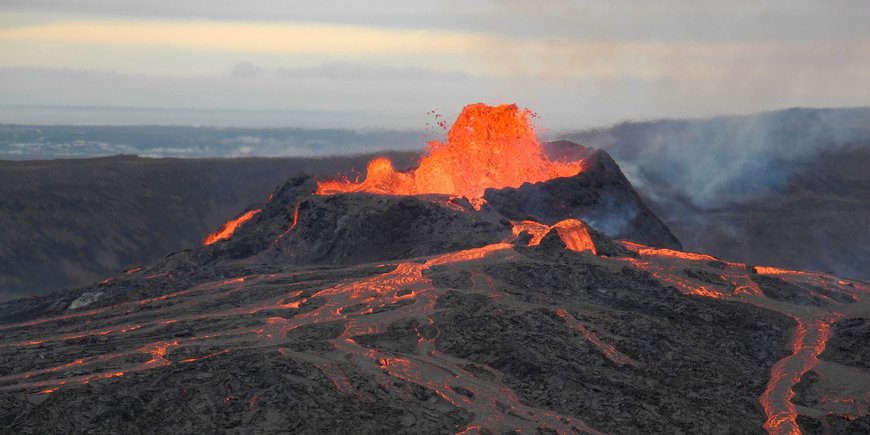
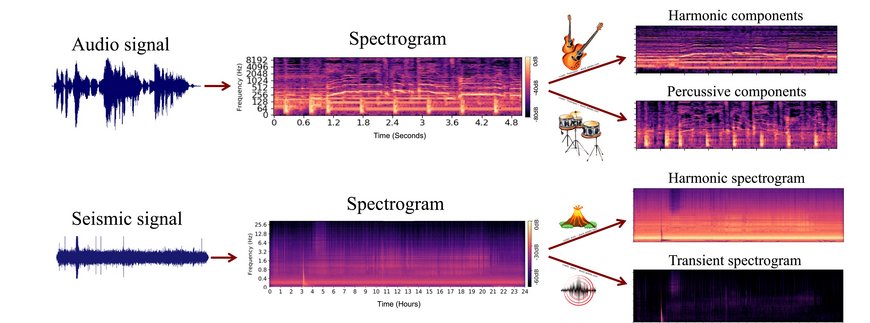
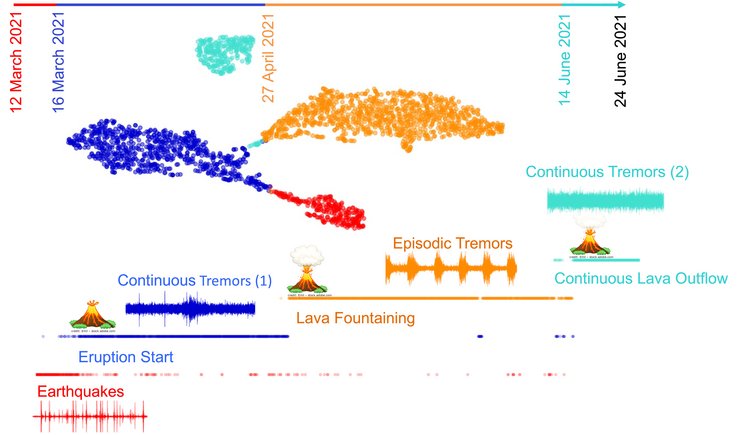
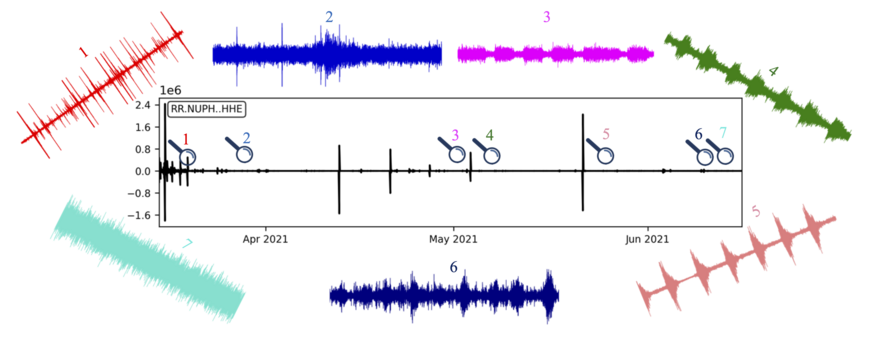








![[Translate to English:] Group photo with 7 people in front of a new metal plant in a large laboratory hall.](/fileadmin/_processed_/0/4/csm_20240628-GFZ_Einweihung_Triax-Anlage-PRESSE_Abb1_040_c-Bahlo-GFZ_187906cb48.jpeg)




![[Translate to English:] Heidi Kreibich, woman with short brown hair and blue eyes. She is wearing a grey cardigan and a red polo shirt](/fileadmin/_processed_/6/6/csm_kreibich-Heidi_1_Querformat_he-2021_2dedd3ef33.jpeg)




![[Translate to English:] [Translate to English:] Totes Meer gesehen von einem Hügel am Ufer](/fileadmin/_processed_/0/f/csm_20240612-web_AdobeStock_151245578_cb8e2706f3.jpeg)


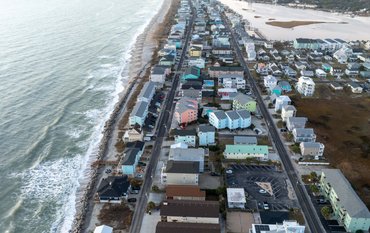
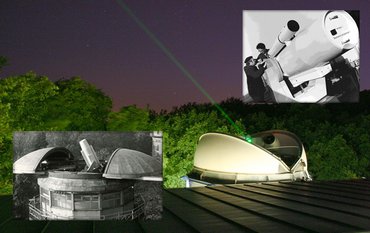
![[Translate to English:] Gruppenfoto im Hörsaal](/fileadmin/_processed_/8/a/csm_240528-GfZ-ERC-Grantees-Gruppe_31be9704f5.jpeg)
![[Translate to English:] Susanne Buiter in front of a blue wall with GFZ logo](/fileadmin/_processed_/d/7/csm_20220721-GFZ-Portrait-Buiter-1-he-web_-c-Reinhardt_Sommer_2a6e3b8ae1.jpeg)
![[Translate to English:] [Translate to English:] Drohne](/fileadmin/_processed_/b/a/csm_20240515_155801_d696ee4200.jpeg)

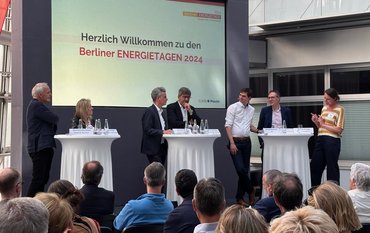
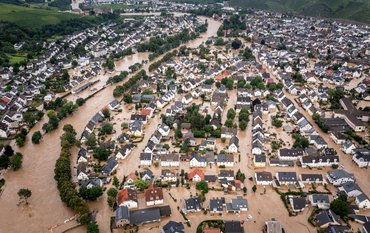
![[Translate to English:] ein riesiges Erdloch in einer kargen Landschaft im Iran mit Bergen im Hintergrund](/fileadmin/_processed_/f/1/csm_DSC_7917_kleiner_f14e27f7ad.jpeg)
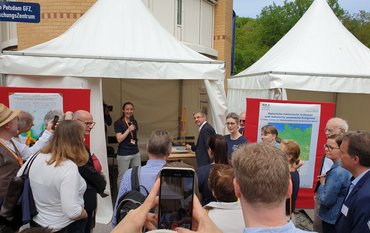
![[Translate to English:] Lecture room at GFZ with participants](/fileadmin/_processed_/a/9/csm_P1140796__002__c03fcad8bd.jpeg)

